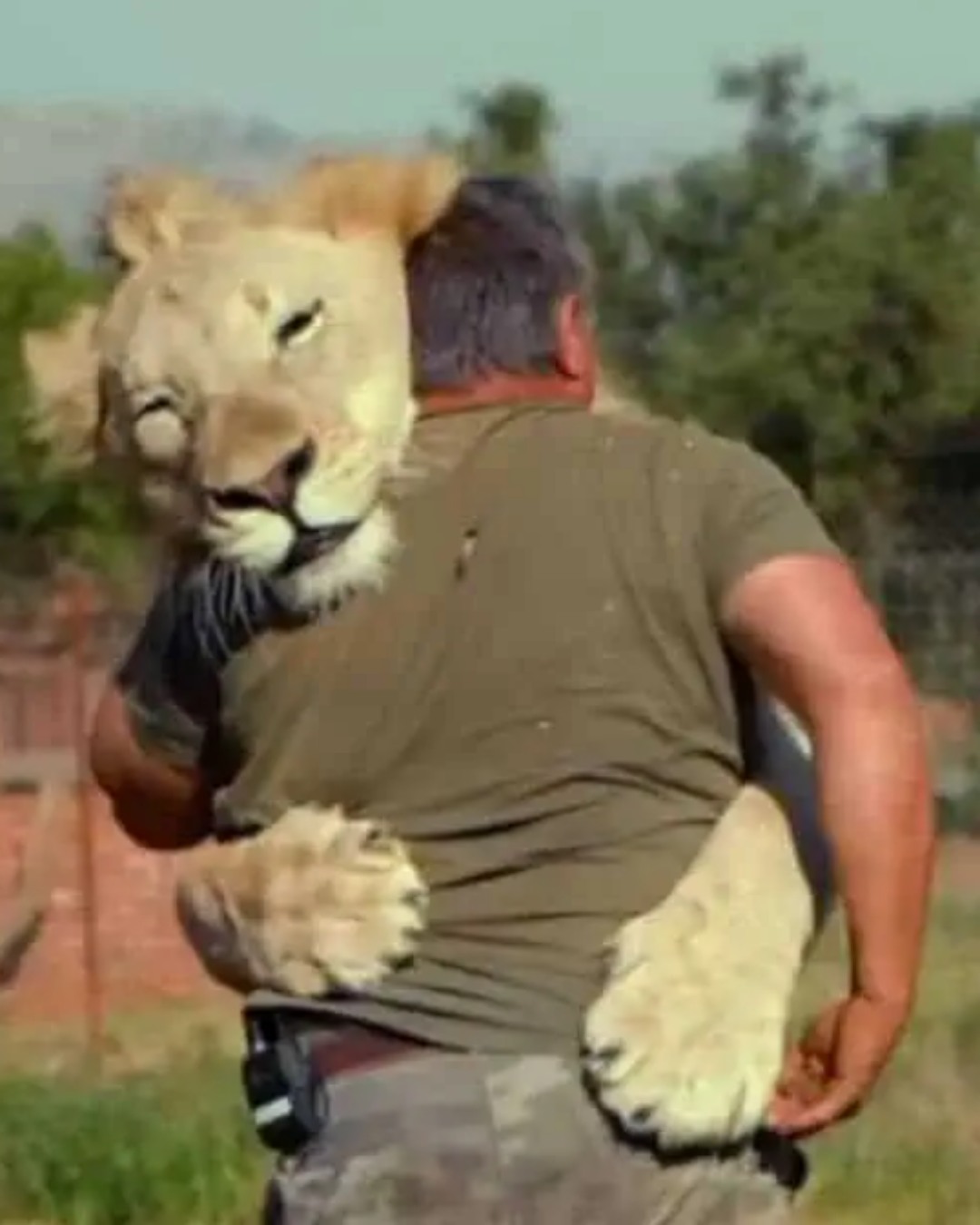In the heart of South Africa lies a sanctuary where the primal beauty of some of the world’s most formidable wild cats is met with gentle human care. The Iron Throne Predator and Wildlife Park is home to an extraordinary community of lions, tigers, leopards, and a cheetah, all nurtured under the watchful eyes and open hearts of Armand and Beatrice Gerber. Their lives, intertwined with the majestic yet unpredictable nature of these great cats, offer an intimate glimpse into a relationship woven with trust, respect, and reciprocal affection.

A Life Unfolding Amid Wild Majesty
Few people ever glimpse the inner worlds of wild cats—creatures often regarded as symbols of untouchable power and fierce independence. Yet Armand and Beatrice’s daily routine breaks this expectation. At Iron Throne Park, the couple spends their days in close contact with ten lions, three tigers, two leopards, and a cheetah. These are not merely animals behind bars but beings with distinct personalities, histories, and needs, many rescued from captive-born circumstances requiring special care.

Their sanctuary is a haven where the cats can express themselves with greater freedom, their enclosures designed to mimic aspects of the wild. Here, the beasts of the savanna and jungle are more than exhibitions; they are residents whose lives are shaped by mutual recognition between species.
The Art of Connection
Armand, in particular, embodies a rare kind of empathy, playing and cuddling with these predators in ways that astonish outsiders. His approach is not reckless bravado but a carefully honed dance of communication. Working with apex predators demands not only full attention and respect but a sensitivity to each animal’s mood, signals, and boundaries.

Tender moments—a lion’s head resting on a shoulder, a cheetah’s playful chase—are testaments to connection built on trust. Although wild cats are not domesticated animals and caution remains evergreen, these interactions reveal the potential for profound bonds even where instinct might suggest distance.
This relationship requires grace as much as strength. The risks are real—scratches and bruises are part of the daily ledger—but Armand and Beatrice greet these as small prices for the privilege of close companionship with some of the planet’s most awe-inspiring creatures.
Redefining Wildness and Care
The work at Iron Throne Park challenges simplistic dichotomies of wildness versus civilization. Armand and Beatrice’s caregiving blurs lines: are these cats truly wild if they seek affection? Can a human unfold greatness in a creature born to roam free in the wild but confined to sanctuary? These questions swirl around their lives, yet the answer is clear in their eyes and the cats’: a meeting of souls across species lines.
The Gerbers see themselves as part of a living ecosystem where respect cultivates harmony. Their relationship with the cats is not dominion but dialogue—a mutual arrangement that honors the cats’ nature even while offering support absent in the wild.
A Sanctuary of Healing and Hope
Iron Throne is more than a refuge; it is a place of healing. Many of the park’s residents come from difficult pasts—rescued from circumstances of neglect, abandonment, or improper captivity. Here, they find space to recover, not only physically but emotionally.

The Gerbers’ dedication transforms lives daily, from cubs learning the rhythms of their species to elder cats who grow old surrounded by care. The park’s mission blends conservation with compassion, showcasing that true stewardship is holistic—addressing the mind, body, and spirit of wild beings.
The Challenges and Rewards
Life among wild cats is intense, unpredictable, and demanding. It is a vocation requiring endless patience, deep humility, and unflagging commitment. The Gerbers acknowledge the constant vigilance needed and the inevitable injuries sustained along the way.
Yet, it is precisely this intensity that sustains their passion. The rewards—a lion’s affectionate nuzzle, a tiger’s playful chase, the quiet moments of trust—are profound, underscoring what might be called the sacredness of interspecies friendship.
A Model for Coexistence
The Gerbers’ story offers a model for coexistence in a world where human-wildlife conflicts grow increasingly common. Their work reminds us that wild animals are not mere spectacles or commodities but sentient beings deserving respect and care.
By fostering bonds of trust and compassion, Iron Throne Park stands as an example that balance can be struck between human needs and the preservation of wildness. Their sanctuary is a testament to possibilities where animal welfare and human stewardship go hand in hand.
Conclusion: Living in Harmony
The lives of Armand, Beatrice, and their wild cats at Iron Throne are stories of connection—moments of grace in a world often marked by separation and fear. Their sanctuary is a place where life in harmony is not an ideal but a daily reality, forged in the presence of strength tempered by gentleness.
Watching these interactions challenges us to rethink our relationship with the natural world. It invites admiration not just for the animals’ power but for their capacity to engage with care across divides. It encourages us to imagine a future where respect, empathy, and understanding lead to coexistence with all creatures, great and small.
In the embrace of this South African sanctuary, we find a vibrant lesson: that life entwined with wildness can be lived with heart, courage, and profound gratitude for the chance to touch the untamable spirit within us all.
